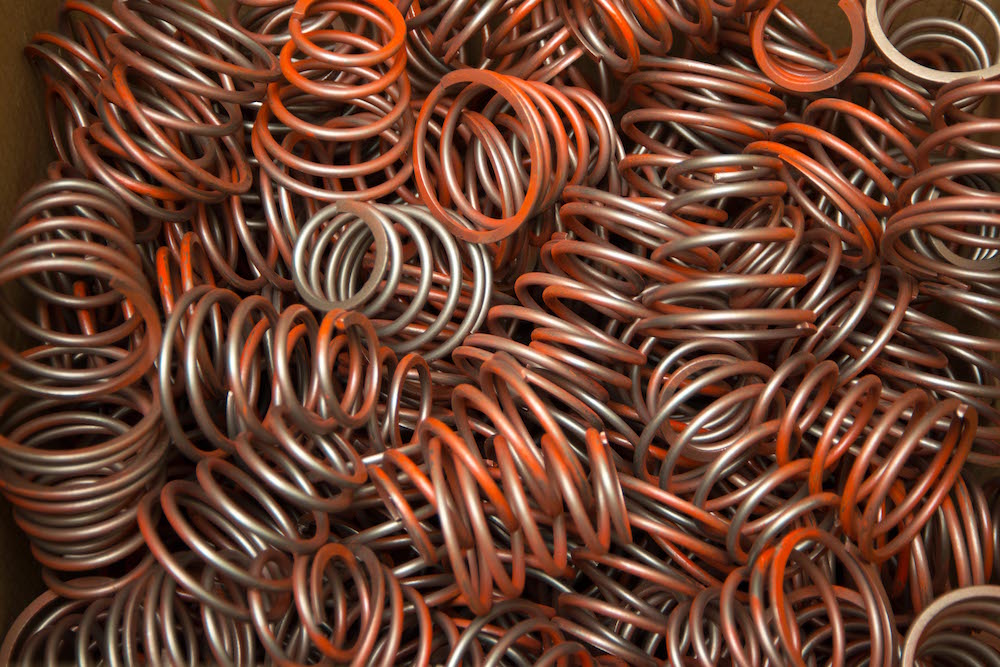Understanding Compression Spring Shapes

If you are examining various types of springs, you can study conical springs, components that feature a constant pitch, barrel springs and designs that offer a variable pitch. Many customers select barrel springs because each component’s central section maximizes durability and stability. Moreover, numerous buyers choose conical springs and devices that have a constant pitch, and these components effectively offer consistent resistance, decrease the effects of sudden movements and lessen the costs of routine maintenance.
Examining the Benefits of Conical Springs
Conical springs require less space than many types of springs, and these components may generate a constant spring rate, reduce vibration and decrease the resonance. Generally, each component’s lower section can offer extra resistance because the bottom section is substantially wider. Likewise, the distinctive coils may significantly improve each spring’s lateral stability and reduce the effects of consistent force.
Choosing Barrel Springs
Typically, barrel springs can effectively prevent a component from buckling. The well-designed coils could also mitigate the effects of sudden jolts, reduce horizontal movements and generate linear force. These compression springs can prevent surging, and this phenomenon may influence each component’s stiffness, enhance conical force and affect concave springs.
Buying Springs That Feature a Constant Pitch
If a spring has a constant pitch, the component features uniform gaps that are situated between the coils. These types of springs can minimize excessive motion, enhance the stability of nearby components and improve the consistency of unavoidable vibrations. The consistent gaps may cause the coils to wear evenly and, when a spring becomes worn, the design can effectively eliminate weak spots and prevent uneven wear that could affect certain springs.
Hourglass Springs
Generally, these components may handle more weight than many comparable springs. The efficient design can reduce tension and decrease the height of each spring. The central coils are substantially wider than the lower coils, so the springs could prevent lateral movements and offer extra resistance that may stabilize other components. Numerous reports have shown that the central coils effectively dissipate energy and, once a spring manufacturer customizes the components, the overall design can enhance a spring’s durability and reduce the costs of repairs.
Springs That Have a Variable Pitch
These types of springs may be ideal for heavy-duty machines, and the springs can augment the level of energy that certain coils absorb. Consequently, the design may improve the component’s stiffness and enhance each coil’s resiliency. When this type of spring reduces vibrations, some gaps will close more quickly than others, so the coils can handle heavy objects and shifting loads that could affect downward force.
Need Compression Springs for Your Application? Contact The Yost Superior Co. Today.